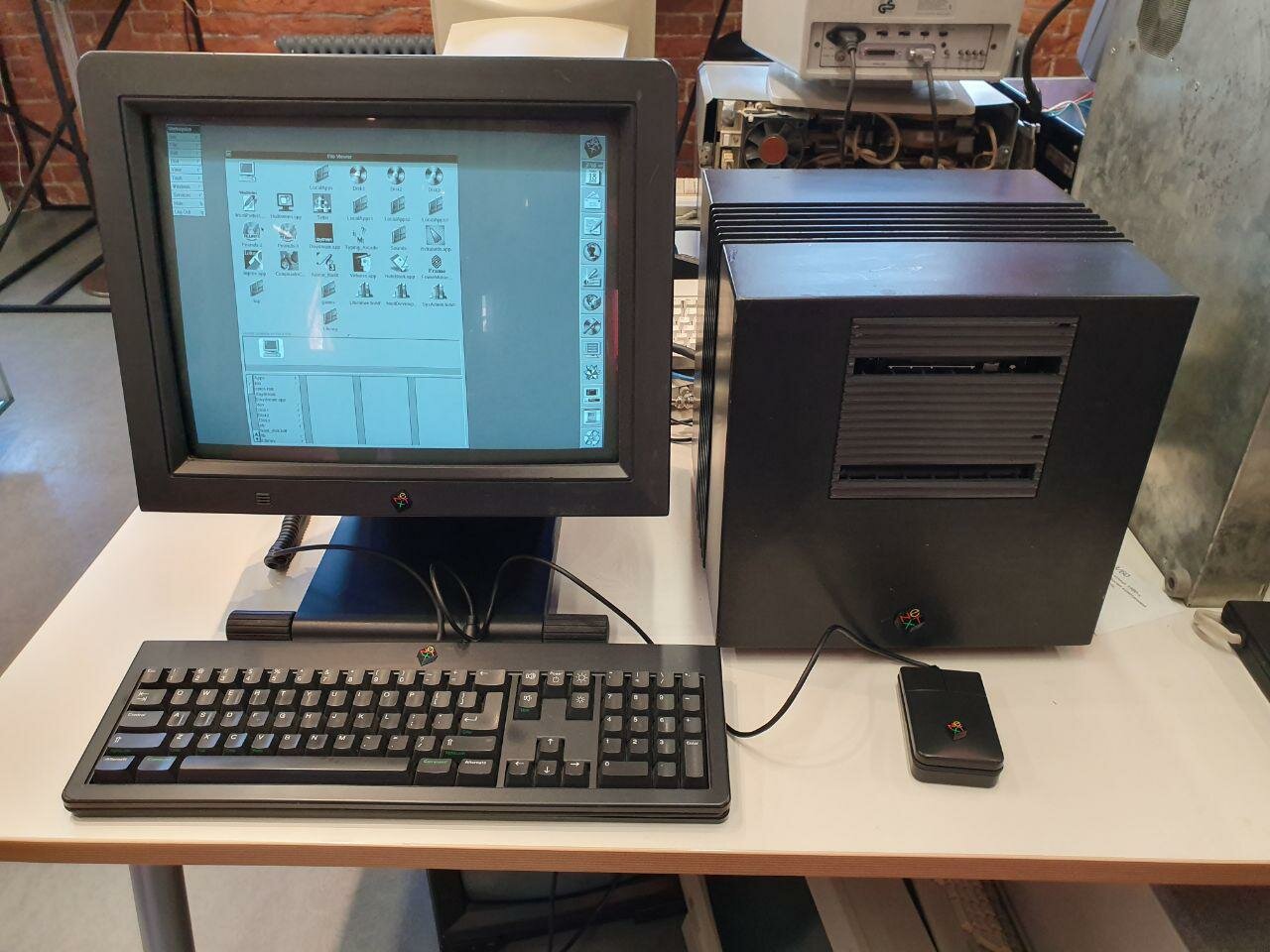The history of computers: night at the Yandex Museum

We at Yandex love computers a lot, so we recently opened our own small museum. Here we collect rare instances of computing and knowledge about the people who influenced their development. Our exhibits are working, you can touch them and run the program.
This year we join the All-Russian action “Night of Museums” and invite Habr's readers to visit. On the night of May 18-19, every half hour from 8:00 pm to 5:30 am, we will take tours of the permanent exhibition. Yandex employees who are professionally engaged or just fanatically devoted to retrotechnique will tell about exhibits and everyday life of programmers of the past.
')
Under the cut we will briefly tell about some of our retrocomputers and funny facts from their history. And you will learn about other activities that we have prepared for our guests. Including for those who remember Mortal Kombat 3.
Retrocomputing
Like Yandex, our museum began with the first server on which the search once worked. It looks like an ordinary personal computer. It has a Pentium II processor with a clock speed of 266 MHz and RAM of 384 MB. Once on this computer was the operating system FreeBSD. Now the machine is loaded from the Windows 3.1 CD. On it you can see the rare “Bible Search” - a program in which Ilya Segalovich and Arkady Volozh worked out a mechanism for constructing a reverse index.
The first server spent several years in the Polytechnic Museum in Moscow, and then returned to Yandex. Soon a community of fans of retrocomputing arose around it, which not only helped to maintain iron in working condition, but also became a source of other rare specimens.
At some point we decided to share our collection with everyone and opened the Yandex Museum. This not only gave us official status, but also allowed us to acquire or rent other interesting computers. So we got the NeXTcube , a second-generation workstation with a magnesium alloy cube system from NeXT, which Steve Jobs founded after leaving Apple.

In 1990, on the NeXTcube, Tim Berners-Lee created the first www-server and the first client-editor browser program. John Carmack used the NeXTcube when developing Wolfenstein 3D and Doom games.
YIS-805 , developed by the Japanese company Yamaha in 1986, was also at our disposal. Under the name “KUVT 2”, one of the modifications of this computer, the YIS-805 / 128R2, specially designed for computer classes of Soviet schools, was exported to the Soviet Union. R in the name of the model means Russia, and KUWT stands for “a set of educational computer equipment”.
It was with the help of this computer that probably the best album in the history of Soviet electronic music was recorded - “512 Kb” by Andrey Rodionov and Boris Tikhomirov.
We also have Soviet computers. For example, " Electronics BK-0010 ", developed in the "Research Institute of Precision Technology" in Zelenograd. In the BK-10 processor and memory are hidden in the keyboard. A monitor, a device for loading programs from audio cassettes and a mouse were separately connected to the computer. That was how many home computers from the 1980s were built, for example, the famous ZX Spectrum (which we also have).
And here you will find the Soviet computer " Agat-7 ". In fact, the creators of Agatha have cloned the Apple II computer, to the extent that some programs written for the Apple II were launched on Agate-7 with additional expansion cards.
This is only a small part of our computers. A more complete list can be found on the Yandex Museum website . But it's better to see it live than read once.
Game Consoles and Tournament
In our museum we collect not only old computers, but also other equipment. For example, we have the Soviet calculator Electronics MK-90 , which supports BASIC programming. Remember the days when schoolchildren played on calculators?
We will not offer to play on a calculator, but we are ready to provide a collection of game consoles. SNES , Sega , Dandy (yes, this is exactly the NES clone we have) and even the NEC PC-Engine Duo R. Not so much as specialized collectors, but we are still young.
All night long at the Yandex Museum you will be able to play computer game classics — for example, Mario , Pac-Man, or Digger . There will also be tournaments on Mortal Kombat 3 and various other games - the winners will be awarded prizes. In the morning we will sit comfortably over tea with buns and continue the conversation about the history and collecting of computers.

Lectures and reports
For the curious, we prepared not only devices, excursions, games and tea, but also reports.
At 20:00, Alexander Surkov will tell you what an IoT is, show how it works and provide examples for both industry and home. At 23:00, he will "show the way from transistors to simple computing devices." Both reports are intended for a wide audience, but for the second, it is desirable to have a basic knowledge of electronics and Boolean algebra.
At 21:00, collector Victor Boev, whose exhibits form part of the exposition of our Museum, will share his notes from the life called “Technoarcheology”.
At 10:00 pm, Pavel Anokhin will show how the interaction with classical minicomputers of the 1960s looked like on the example of one museum exhibit: “We’ll focus specifically on programming the machine from the console: toggle switches, light bulbs, that's all that was so loved in old science fiction films and what modern computers don't have at all. ”
PDP-11 computers from the 1970s have long worked at a variety of enterprises, banks, factories. But they began to break down and become useless. In order not to rewrite thousands of written programs for them, you need to teach a modern computer to work for its “great-great-great-grandfather”. About this at 00:00 will tell George Barkan.
We are waiting for you at the address: Moscow, st. Timur Frunze, d. 11, p. 13 Metro Park Culture. Come to visit!
Source: https://habr.com/ru/post/451908/
All Articles